Pug Colors Explained
Pugs. The breed we all know and love has most commonly been seen in two colors: fawn and black. But today, thanks to social media and the Internet, we’re seeing pugs of a variety of colors. What pug colors exist, and what do the kennel clubs say about it? Read on to get the low down on pug colors and our guide to what you should be looking for and asking before getting your new, healthy puppy.
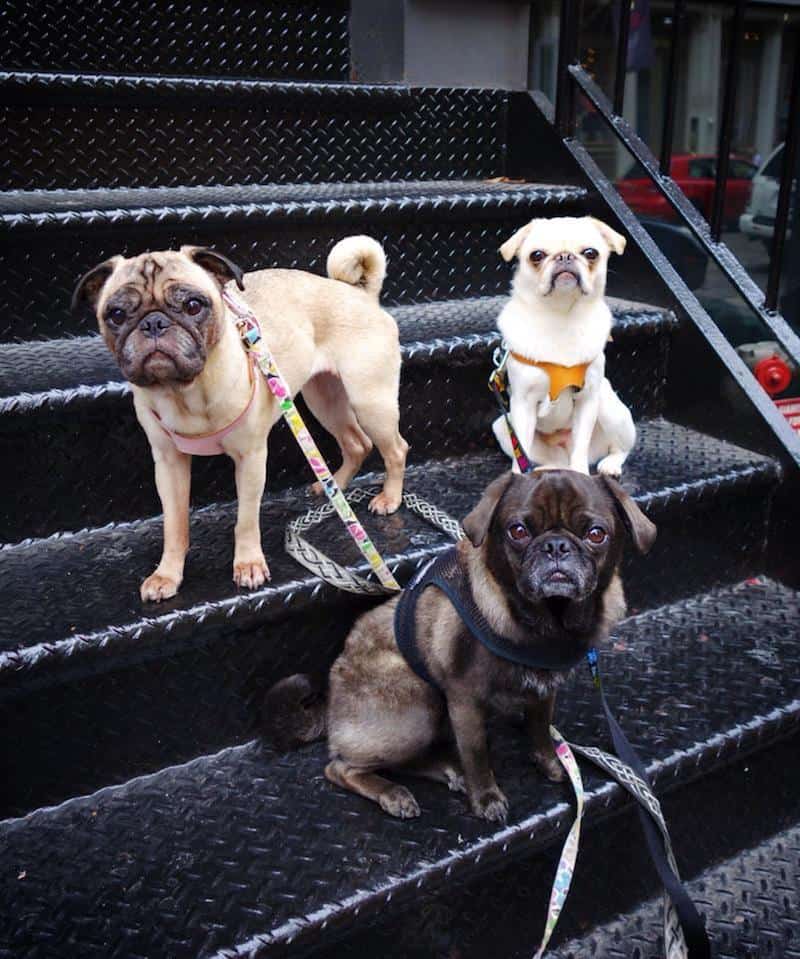
Pug Breed Standard Colors for Major Kennel Clubs
The American Kennel Club (AKC)
The AKC recognizes two colors in pugs: fawn and black.
The AKC follows the guidelines set forth by the Pug Dog Club of America.
The Canadian Kennel Club (CKC)
The CKC recognizes three colors for pugs: fawn, silver-fawn and black.
It should be noted that the color “fawn” for a CKC pug includes shades ranging from light apricot to deep apricot to reddish gold.
The Federation Cynologique Internationale (FCI)
The FCI recognizes four colors for pugs: silver, apricot, fawn and black.
The Kennel Club of the UK (KC)
The KC recognizes four colors for pugs: silver, apricot, fawn and black.
The KC follows the guidelines set forth by the Pug Dog Club of the UK.
Can a non-standard colored pug still be registered with a kennel club?
Yes.
For example: the AKC recognizes two pug colors as breed standard, fawn and black. These are the colors required for a pug to be a show dog and compete in the ring. They are the breed standard.
However, a non-fawn or black pug can still be AKC registered – they will just not be allowed in the show ring.
Silver-fawn, apricot, and even rare and controversial colors like brindle, can be registered with the AKC and listed as an alternate color. That’s because the AKC does not police the standards of dogs (that are not in the show ring), and they work on an honor system.
So, if you see a non-standard colored pug listed as registered with the AKC, it is entirely possible. But be warned, anyone can register a puppy with the AKC – and doing so doesn’t necessarily mean the breeder complies with or holds up the club’s standards for the breed.
The Pug Dog Club of America Breed Standard
For those of us in the United States, the pug breed standard comes from the Pug Dog Club of America. You can read it here.
The pug breed standard is the blueprint for the breed, and the target for which breeders should aim.
The Pug Dog Club of America firmly states that: All reputable breeders of pugs are not interested in the development of any color of pug other than fawn or black.
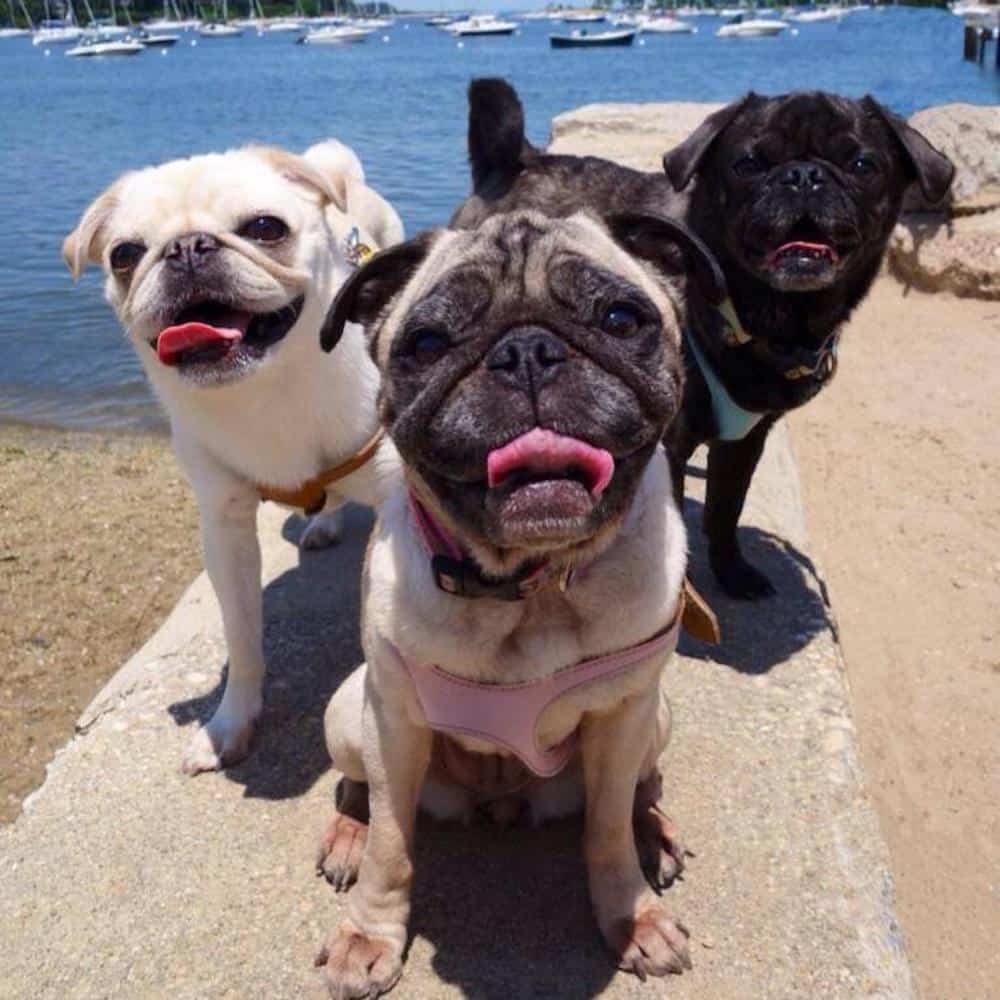
The most common pug colors:
Fawn Pug

Fawn is the most common pug color.
The fawn coloring is like a creamy, café con leche, lightly toasted marshmallow type of color. Or, if you want a boring description, it’s tan.
Their muzzle or mask, and ears, should be as black as possible.
Chances are, if there’s a pug in a movie, or you’re seeing one on the street, or in a photo, they’re likely to be fawn.
Black Pug
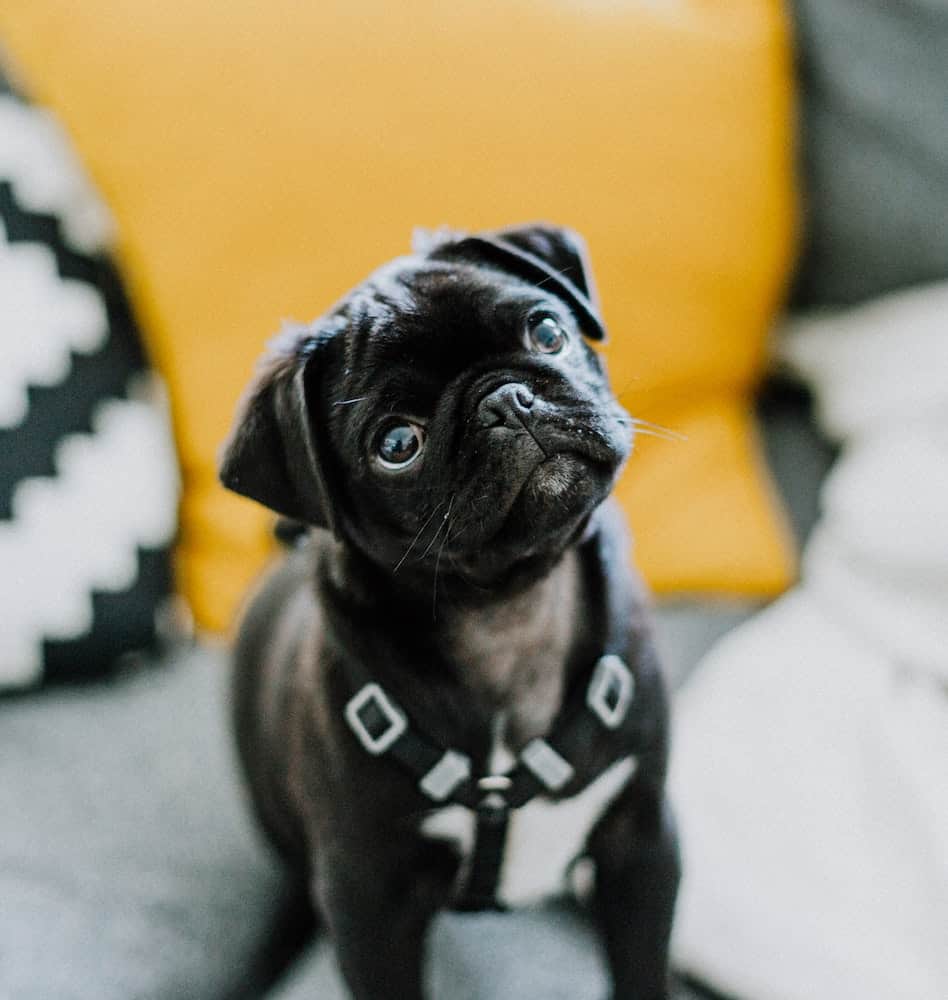
Even though fawn is the most common color of pug, the black gene is dominant.
Black pugs have a rich, dark coat, and their muzzle or mask, and ears are black too.
Black pugs are typically solid in color, but it’s not unusual to see one with small white markings, usually present on their chest.
Silver-fawn and Silver Pugs
Silver-fawn is oftentimes labeled as a type of fawn. They have a shiny gray sheen to their coats and are the lightest color a pug can be.
Silver-fawn pugs are pretty rare, and many who have them categorize them as fawns, instead of silver-fawns.
Apricot Pugs

Apricot pugs have warm undertones of orange in their coats.
The hues of orange are richer and deeper in color than the common fawn coloring.
It’s very common for apricot pugs to have fawn or white coloring peppered throughout their coat, so they’re not fully apricot throughout.
What pug colors are labeled “exotic,” “trendy” or “rare”?
Besides Fawn, Black, Silver, and Apricot, the other pug colors that exist fall under the “exotic” or “trendy” category.
They include:
- Chocolate pugs
- Panda pugs
- Brindle pugs
- White pugs
- Merle pugs
- Black and tan pugs
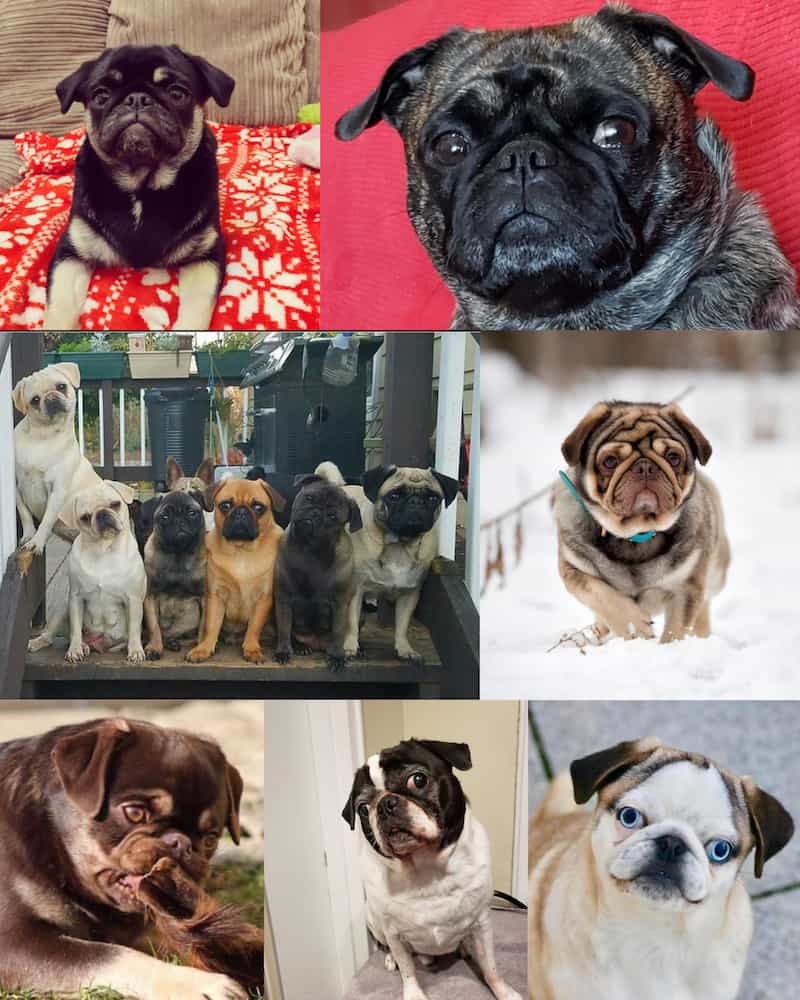
These are colors are uncommon and often sold for very high prices.
They are not breed standard, and not considered good practice amongst breeders.
If a pug differs in color, that often means there are unknown factors in the blood line that caused the change. This can be misleading, and it means you’re not getting a pure bred pug.
To achieve these colors, breeders have had to breed pugs with non pugs. For example:
- To achieve merle, they have bred in the merle Chihuahua.
- To achieve white, they have bred in the French bulldog or Pekingese.
- To achieve brindle, they have bred in the Boston terrier.
- To achieve longer hair, they have bred in the Shih Tzu or the Pekingese.
Also, beware of any breeder referring to these colors as “rare” – rare implies that these are one off occurrences that happened naturally, when the truth is, puppies sold in these colors were intentionally bred.

Should I be wary about a breeder who sells exotic pugs?
One of the goals of reputable breeders is to produce dogs that come as close to breed standards as possible. They are meant to preserve the breed and produce healthy puppies. That means their dogs should be black or fawn in color.
When breeders intentionally breed dogs that are different colors, and away from breed standards, it is usually a marketing ploy to charge more money and appear unique.
Their intentions differ from reputable breeders.
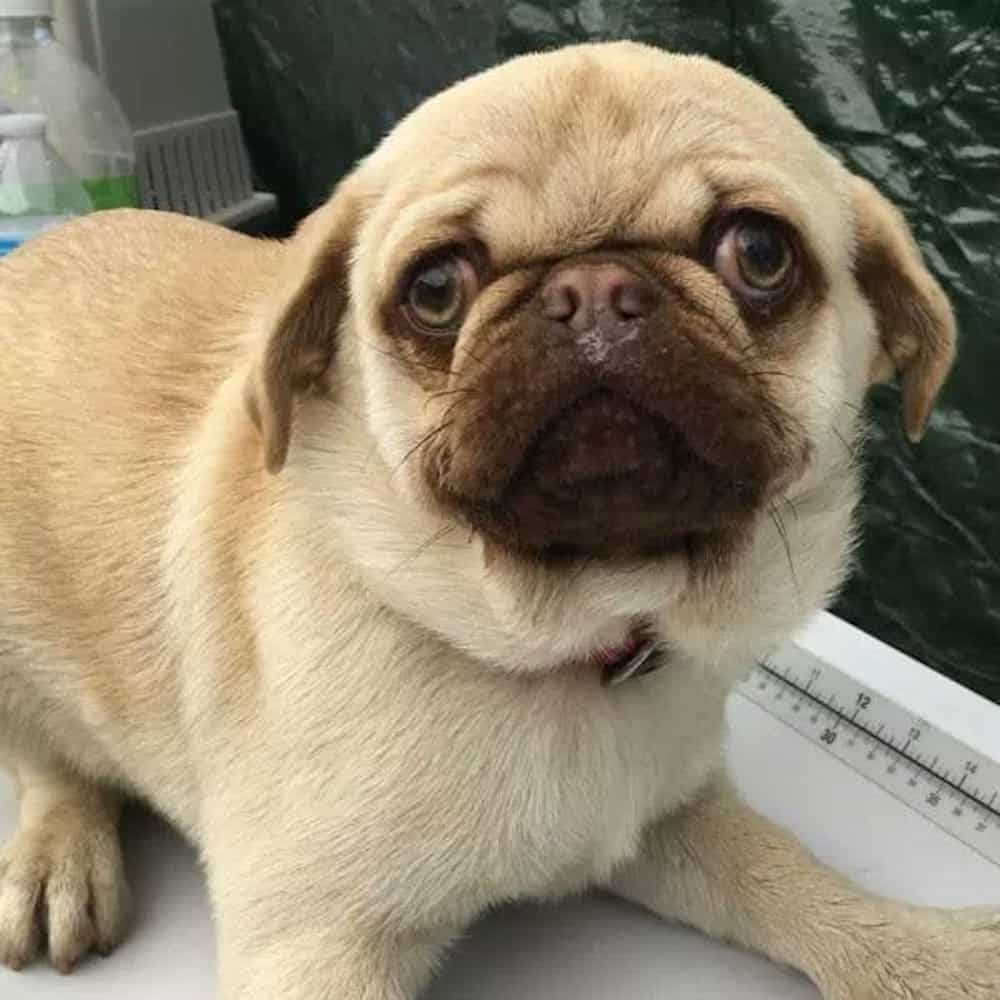
What if I want to buy a pug puppy that is a unique color?
If you have an affinity to a particular color, do your research before buying a puppy.
Be sure that the puppies are health tested, and that you can meet them and their parents in person. Ask the breeder questions, ask to speak to others who have purchased their dogs, and check their prices.
Ensure that your puppy is well bred and healthy. Never purchase a puppy on looks or color alone.
Final thoughts on pug colors
Breed standards exist for a reason – if breeders didn’t follow them, pugs would start to look very different, and no longer be the lovable, funny little creatures we know and love.
If a breeder chooses to stray from the breed standards, it’s not necessarily a bad thing, but it is something to take note of.
The bottom line: buy responsibly and make a well informed decision.
Never buy a dog, no matter the color or breed, on a whim.
If a breeder produces puppies away from breed standards, that doesn’t mean they are exempt from things like health testing, or producing healthy, happy puppies. Ask questions, meet the puppy’s parents, and speak to other buyers. And remember: never buy a puppy online.
If you need more help, check out the following:
- How to Find a Reputable Pug Breeder (and not get puppy scammed!)
- A Complete List of Pug Rescues in the USA
Do you have a pug? If so, what color are they?
Pin for later!
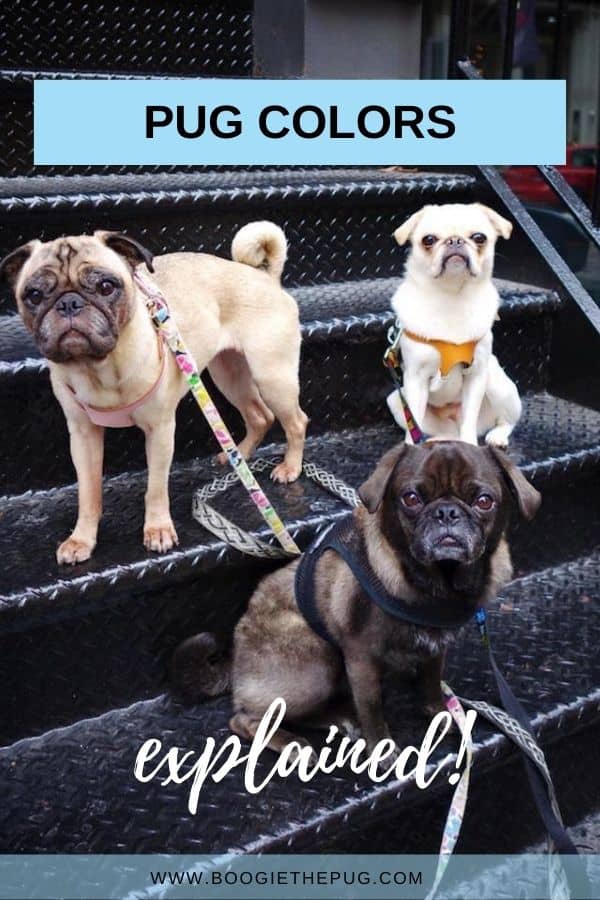

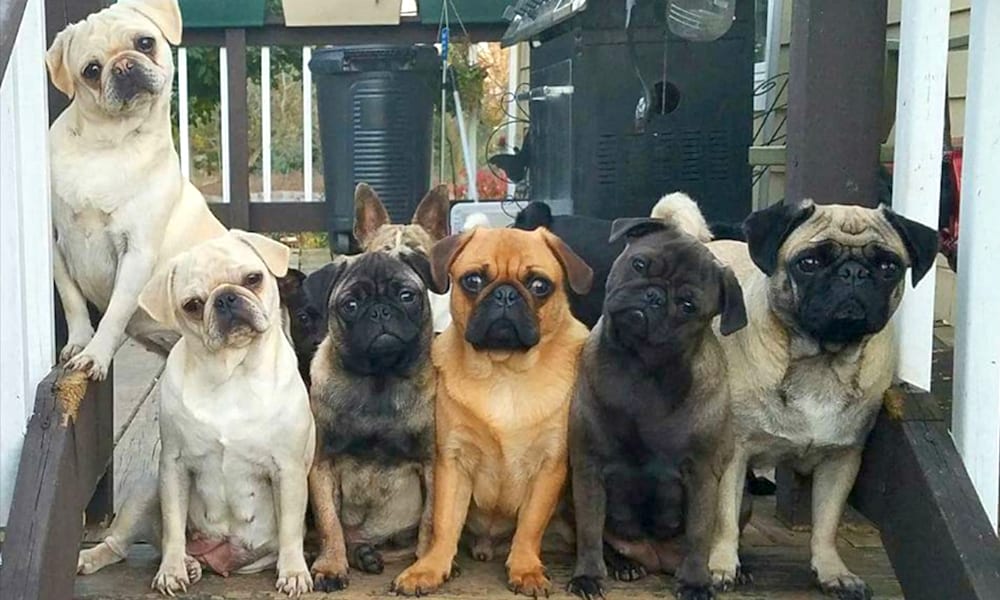
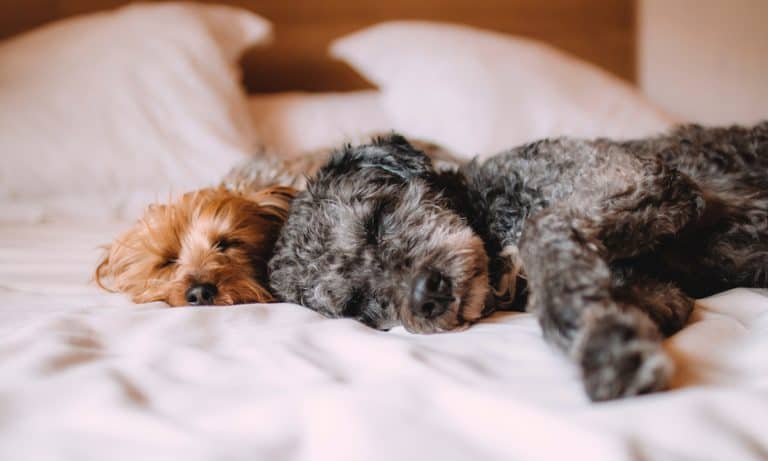
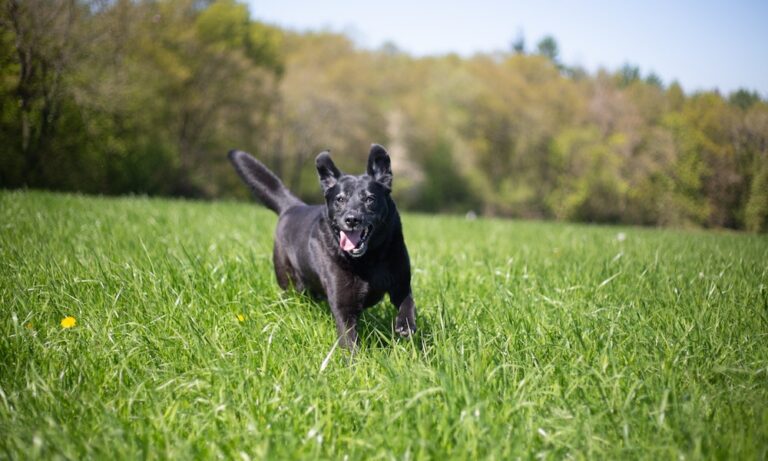



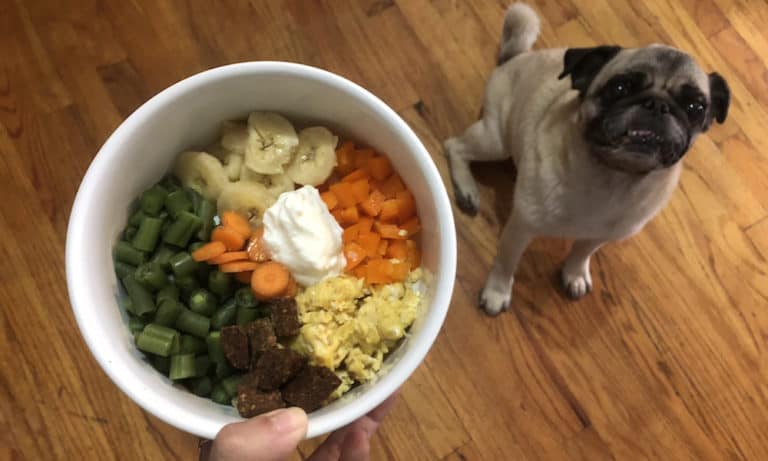

Hello my name is george. My email is [email protected] im planning a trip from usa to hungary how do i go about taking my pugs with me ?
I just purchased my very first Pug. I have had Shih Tzu’s Most of my adult life I love their sweetness and good temperament. My veterinarian is the breeder And has assured me that the Pug is very similar but without all the grooming. I have always thought they are truly adorable little animals but I’ve never really been around one… Can hardly wait to go on this new adventure
Pugs are called little shadows for a reason it breaks there heart to be away from there masters they want to go everywhere with you they are very loyal and very loving congrats on your baby
How is your little Puggie? We have had Pugs for 32 years and two of the last ones we had before our girl Ruby now, was a sweetheart Shih Tzu named Sake. He was very Puggy in his temperament and personality and when we lost the last three Pugs at the same time, roughly, I was open to adopting a Shih Tzu. My husband however only wanted a Pug. So we got Ruby, who is now 5. When she was 8 months old, I kept looking and found a rescue ShiChi, half Shih Tzu and half Chihuahua. So now we have Dexter too. He’s quite a riot. He also is almost five and he has a Shih body, short legs, and the sweetness of Sake but his Chihuahua also kicks in and he can be a bit loud and temperamental. He is also a velcro dog and one of the biggest lovers we’ve ever had. These two are not at peas in a pod as our Pugs were together. Dexter is a bit jealous of anyone getting any attention but him. Ruby, is, as we say ‘all Pugged up’. She is a food hound, a snoring, loving, lump of love who thinks everyone is as in love with her – naturally! – as we are. She rarely barks, which is common for Pugs. She lets Dexter be the watch dog. Pugs are truly magnificent. And yes, they are naturally adorable but you do need a vacuum when you own one. We are for sure Pug people.
Puppy pug light fawn triple has blue eyes is that going to have problems as she ages
Well, the reality is having a trendy or exotic doesn’t mean it’s unhealthy. Quite the contrary actually and I would urge this article to make an adjustment. For instance, I have a silver (not silver fawn) that is considered rare/trendy/or whatever you want to call it. I got her knowing she was mostly pug but not all pug because she had a little more of a snout which is much better for the dog that the super squished faces that breeders have been irresponsibly breeding towards. They did this knowing they health risks. This is not how the breed even started. Responsible pug breeding today is working towards eliminating BOAS (brachycephalic obstructive airway syndrome)…. Even if it means mixing in other breeds to accomplish this.
in Europe the are known as retro mops the pug with a slightly less squashed face . mops Dutch for pug